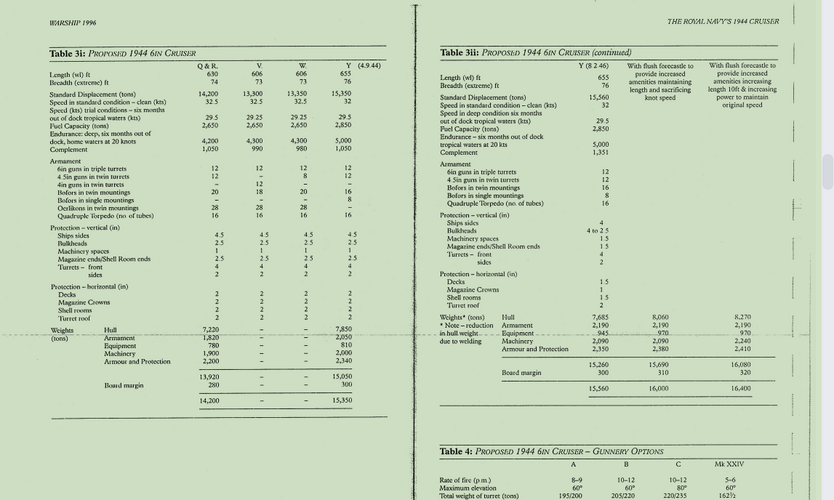WANX
ACCESS: Restricted
- Joined
- 25 March 2021
- Messages
- 7
- Reaction score
- 10
This is a question troubled me while I was reading Rebuilding the Royal Navy. At the start of the second chapter, which is the chapter titiled "The Demise of the cruiser", there is a paragraph like this:
"The new design had a flush deck, which resulted in a saving of only 40 tons over Design ‘Y’ but nearly 585 tons against the ultimate flush-forecastle Neptune design. Only 30 tons was expected to be saved in the armament weight but 300 tons was gained in the weight of the machinery, which produced 100,000shp to achieve 31.5kts, when compared with the ultimate Neptune design. Displacement was 15,070 tons, a saving of only 490 tons over design ‘Y’."
For summary we could conclude that the new cruiser design (Sketch A of the Minotaur class) has a displacement 40 tons less than design Y, 585 tons less than the final Neptune class, and is 490 tons less than design Y. And the specific figure for this new cruiser's displacement is 15070 tons.
And according to George Moore's The Royal Navy's 1944 cruiser on WARSHIP 1996, standard displacement of 1944 cruiser sketch Y in 1944 is about 15350 tons; standard displacement of sketch Y in 1946 is 15560 tons; final Neptune class design with speed of 31.75 knots have a displacement of about 15960 tons. These figures can not match the relationship in D K Brown's narration. I will say it is very confusing. Could anyone provide some explanations?

"The new design had a flush deck, which resulted in a saving of only 40 tons over Design ‘Y’ but nearly 585 tons against the ultimate flush-forecastle Neptune design. Only 30 tons was expected to be saved in the armament weight but 300 tons was gained in the weight of the machinery, which produced 100,000shp to achieve 31.5kts, when compared with the ultimate Neptune design. Displacement was 15,070 tons, a saving of only 490 tons over design ‘Y’."
For summary we could conclude that the new cruiser design (Sketch A of the Minotaur class) has a displacement 40 tons less than design Y, 585 tons less than the final Neptune class, and is 490 tons less than design Y. And the specific figure for this new cruiser's displacement is 15070 tons.
And according to George Moore's The Royal Navy's 1944 cruiser on WARSHIP 1996, standard displacement of 1944 cruiser sketch Y in 1944 is about 15350 tons; standard displacement of sketch Y in 1946 is 15560 tons; final Neptune class design with speed of 31.75 knots have a displacement of about 15960 tons. These figures can not match the relationship in D K Brown's narration. I will say it is very confusing. Could anyone provide some explanations?

